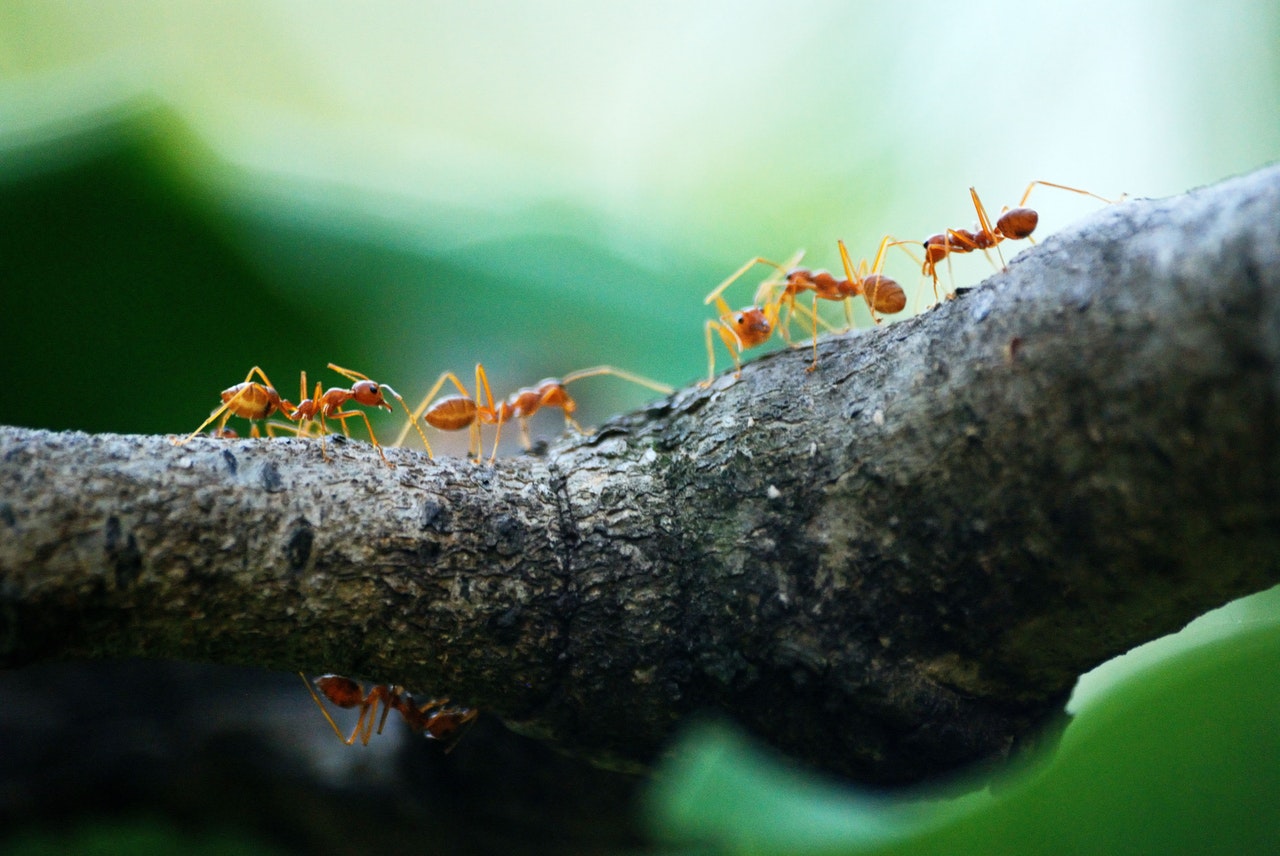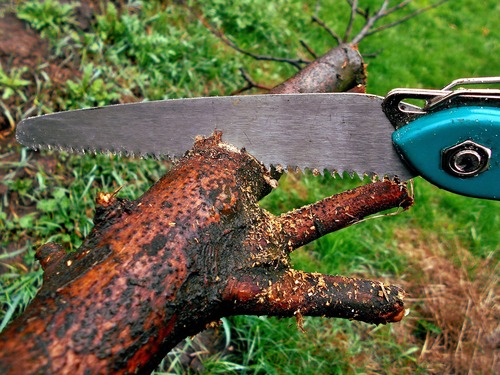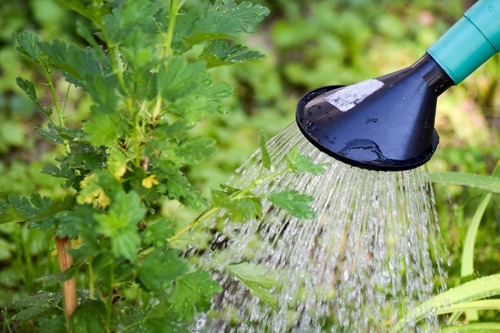The Top 9 Most Common Tree Issues & How to Solve Them
Introduction
Trees stand as foundational elements in any landscape, offering shade, beauty, and ecological balance. However, various challenges can jeopardize their well-being . From compacted soil hindering root growth to pest invasions and environmental stressors, trees encounter various obstacles that compromise their health.
This comprehensive guide explores the nine most prevalent tree issues and provides actionable solutions to nurture and safeguard these green guardians. Delve into each issue, understand its impact, and discover effective strategies to mitigate risks and bolster tree health. By equipping ourselves with knowledge and implementing proactive care, we pave the way for resilient and thriving trees that enrich our environments and communities.
Let’s delve deeper into these prevalent tree issues and effective ways to resolve them.
Compacted Soil: A Barrier to Root Growth

This Backyard Soil Shows Signs of Being Compacted
Understanding the Issue
Soil compaction occurs due to various factors, including heavy foot traffic, construction activities, or the use of heavy machinery. This compaction restricts root growth and limits essential air and water movement within the soil. Compacted soil hinders root expansion, leading to reduced nutrient uptake, water retention issues, and restricted root aeration, ultimately compromising tree health and vigor.
Assessing Soil Compaction
- Visual Indicators: Look for signs such as thinning foliage, poor growth, standing water after rain, or visible soil surface compaction.
- Soil Penetration Tests: Conduct simple tests using probes or soil augers to assess soil penetration depth. Difficulty penetrating soil layers suggests compaction problems.
Solutions & Prevention
- Soil Aeration: Employ mechanical or manual aeration techniques to alleviate soil compaction. Aeration creates air channels, improving soil structure and facilitating root growth.
- Organic Matter Addition: Incorporate organic amendments such as compost, leaf mulch, or aged manure into compacted soil. Organic matter enhances soil structure, promotes microbial activity, and fosters root development.
- Vertical Mulching: Utilize vertical mulching techniques by drilling holes into compacted soil and filling them with organic matter or specialized materials. This practice improves soil aeration and enhances root growth.
- Protective Measures: Install physical barriers or designated pathways to minimize foot traffic over root zones. Employ boards or mulch to distribute the weight of heavy machinery during landscaping or construction projects. Here are some extra measures to prevent compacted soil in the future.
Nutrient Deficiency: Fueling Tree Growth
Identifying the Problem
Trees require various nutrients, including nitrogen, phosphorus, potassium, calcium, magnesium, and others, for healthy growth and development. Inadequate levels of these nutrients hinder their overall vitality. With natural trees in the forest, trees receive additional nutrients from the decomposing leaves that aren’t swept away. Since most homeowners rake away debris in their yards, the trees aren’t able to get the natural nutrients that seep into the soil. Continuous removal of organic matter, inadequate fertilization, or imbalanced soil composition leads to nutrient depletion, impacting tree health.
Understanding Nutrient Deficiencies
- Symptoms: Look for signs such as yellowing or browning of leaves, stunted growth, reduced foliage, or leaf deformities, indicating specific nutrient deficiencies.
- Soil Testing: Conduct soil tests to assess nutrient levels and deficiencies accurately. Soil analysis provides insights into which nutrients are lacking and in what quantities.
Resolving the Issue
- Timely Fertilization: Apply fertilizers at appropriate times based on tree species and local climate conditions. Follow recommended fertilizer formulations to address specific nutrient deficiencies.
- Organic Matter Incorporation: Add organic amendments like compost or mulch to the soil to enhance nutrient content. Organic matter breaks down gradually, releasing nutrients and improving soil structure.
- Balanced Fertilization: Utilize slow-release or balanced fertilizers to provide a consistent and sustained supply of nutrients to trees without causing nutrient imbalances or environmental harm.
Pests: Undermining Tree Health

Red Ants Crawl Along a Tree Branch – Photo by Poranimm Athithawatthee
Recognizing the Threat
- Types of Pests: Pests , including insects, fungi, and pathogens, can inflict significant damage to trees by weakening their defenses and compromising their vitality.
- Stress and Vulnerability: Stressed trees, whether due to inadequate care, poor location choice, environmental factors, or nutrient deficiencies, become more susceptible to pest infestations. Pests exploit these vulnerabilities, further weakening the tree’s health.
Taking Action
- Identification and Diagnosis: Accurate identification of pests is crucial for targeted treatment. Consult with local arborists or entomologists for proper identification and advice on suitable treatments.
- Treatment Options: Employ environmentally friendly methods, such as biological controls, horticultural oils, or insecticidal soaps, to manage pest populations while minimizing harm to beneficial organisms.
- Timely Action: Address pest issues promptly to prevent infestations from spreading and causing extensive damage. Treatments applied at the right time in a pest’s life cycle are more effective.
- Integrated Pest Management (IPM): Implement a holistic approach to pest control, combining preventive measures, cultural practices, and targeted treatments to manage pest populations effectively and keep pests away .
- Cultural Practices: Maintain tree health through proper watering, adequate nutrition, and appropriate pruning practices to reduce stress and improve resilience against pests.
- Natural Predators and Beneficial Insects: Encourage the presence of natural predators and beneficial insects that prey on pests, creating a natural balance in the ecosystem and minimizing pest populations.
Man-Made Damage: Threats from Equipment
Assessing the Impact
- Lawn Equipment Effects: Machinery like lawnmowers, weed eaters, and string trimmers can inadvertently cause damage to tree trunks, leading to wounds or bark injuries. This damage disrupts the tree’s natural defense mechanisms and compromises its ability to spread nutrients and water.
- Construction and Development: During construction or landscaping projects, heavy machinery, excavation, or compaction of soil near trees can lead to root damage, affecting nutrient absorption and stability.
Mitigating Damage
- Protective Barriers: Install physical barriers, such as tree guards or fencing, to safeguard trees from accidental collisions with lawn equipment or machinery.
- Proper Equipment Usage: Educate individuals responsible for lawn maintenance or construction work on proper techniques to avoid tree damage. Maintain a safe distance between machinery and trees to prevent accidental collisions.
- Regular Tree Inspection: Routinely inspect trees for signs of damage caused by equipment. Immediate action to address wounds or injuries prevents further deterioration and aids in the tree’s recovery.
Natural Damage: Wildlife and Environmental Impact

A Deer Munches on a Large Tree Leaf
Wildlife and Nature’s Impact
- Wildlife Interference: Animals like deer, rabbits, and rodents can cause substantial harm to trees by browsing on foliage, gnawing on bark, or creating abrasions. These actions compromise the tree’s health and aesthetics.
- Environmental Stressors: Severe weather conditions, including storms, heavy rainfall, wind, and temperature extremes, can lead to physical damage such as broken branches, uprooting, or limb failure.
Protective Measures
- Wildlife Deterrents: Utilize physical barriers like fences or tree guards to protect trees from browsing animals. Applying repellents or installing motion-activated deterrents can also discourage wildlife interference.
- Pruning and Structural Support: Regular pruning enhances tree structure, reducing vulnerability to storm damage. Properly pruned trees are more resilient and less prone to branch failure during adverse weather.
- Storm Preparedness: Implement preventive measures like pruning weak or overextended branches to fortify the tree structure against storm damage. Promptly remove dead or damaged limbs to prevent potential hazards.
- Professional Assistance: Engage arborists or tree care specialists to assess storm-damaged trees and provide necessary care, including corrective pruning or tree support systems.
Space Constraints: Limited Root Growth
Understanding Root Expansion
Inadequate space for root development poses significant challenges to a tree’s overall health and stability. As trees mature, their root systems expand to seek nutrients, water, and structural support. If the location of the tree is poorly planned, it can cause serious issues when the roots begin to stretch. Insufficient space restricts the natural growth, compromising the tree’s ability to access essential resources.
The Impact on Tree Health
- Stunted Growth: Constrained root space restricts a tree’s ability to establish a robust root system. This hampers nutrient absorption and limits water uptake, leading to stunted growth and diminished vitality.
- Structural Instability: Limited root space affects a tree’s anchorage, making it susceptible to uprooting during storms or adverse weather conditions. This compromises the tree’s stability and poses risks to nearby structures or individuals.
- Competition for Resources: Inadequate space intensifies competition among roots, leading to overcrowding and reduced access to essential nutrients and water. This further exacerbates the tree’s stress and hampers its ability to withstand environmental pressures.
Ensuring Tree Health
- Root Zone Assessment: Regularly evaluate the root zone for signs of constraint or disturbance. Soil compaction, surface roots, or physical barriers obstructing root growth indicate limitations.
- Optimal Watering Practices: Implement proper watering techniques to ensure adequate moisture reaches the entire root zone. Deep watering encourages roots to grow deeper, enhancing stability.
- Soil Enrichment: Amend soil with organic matter to improve its structure and fertility. Incorporating compost or mulch helps retain moisture and fosters microbial activity beneficial for root growth.
- Professional Guidance: Consult certified arborists for root evaluation and guidance on managing constrained root spaces. Root pruning or structural support might be necessary to mitigate issues arising from limited space.
- Preventing Future Issues: When planting new trees, select appropriate species and consider their growth patterns and space requirements. Avoid planting trees too close to buildings, utilities, or other structures to mitigate potential conflicts as they mature.
Improper Pruning: Impact on Tree Health

A Hand Saw Being Used to Cut a Branch – Photo by Jerzy Gorecki on Pixabay
Recognizing Pruning Challenges
Pruning is a fundamental tree care practice, but when executed incorrectly, it can have detrimental effects on a tree’s well-being. Improper pruning involves indiscriminate or excessive removal of branches, incorrect cutting techniques, or neglecting pruning altogether. This practice weakens trees, compromising their structural integrity and exposing them to various risks.
Corrective Measures
- Education and Understanding: Educate yourself on proper pruning techniques or seek guidance from certified arborists. Learn about tree species-specific pruning requirements to ensure optimal care.
- Targeted Pruning: Focus on removing dead, diseased, or crossing branches while preserving the tree’s natural shape and structure. Prune branches just outside the branch collar, avoiding leaving stubs.
- Pruning Frequency: Schedule regular pruning sessions to maintain tree health. Early intervention and corrective pruning mitigate potential issues and encourage healthy growth.
- Tools and Techniques: Use sharp, high-quality pruning tools to make clean cuts without causing undue stress to the tree. Sterilize tools between cuts to prevent the spread of diseases.
Soil pH Imbalance: Disrupting Nutrient Uptake
Identifying the Issue
Soil pH, the measure of acidity or alkalinity, profoundly influences nutrient availability for trees. An imbalance in soil pH levels can impede the tree’s ability to absorb essential nutrients, even if they are present in the soil. Trees have specific pH requirements for optimal growth, and when these requirements aren’t met, it can lead to nutrient deficiencies, stunted growth, and overall diminished health.
The Impact on Tree Health
Trees thrive within specific pH ranges; however, variations in soil pH can restrict the availability of crucial nutrients like phosphorus, nitrogen, and potassium. Acidic soils, with pH levels below the ideal range, may hinder the uptake of essential elements like calcium and magnesium, while alkaline soils, with pH levels above the preferred range, can limit the availability of iron, manganese, and zinc. As a result, trees struggle to access the nutrients vital for growth and overall health, making them more susceptible to diseases, pest infestations, and environmental stressors.
Resolving the Issue
- Soil Testing: Begin by conducting a thorough soil test to determine the current pH levels. Soil testing kits or professional soil analysis provide precise insights into the pH status and nutrient composition.
- pH Adjustment: Based on the soil test results, adjust the pH levels using appropriate amendments. For acidic soils, lime applications help raise pH levels, while elemental sulfur or acidifying fertilizers aid in lowering pH for alkaline soils.
- Organic Amendments: Incorporating organic matter such as compost, leaf mold, or well-rotted manure improves soil structure and assists in stabilizing pH levels over time.
- Mulching Practices: Mulching with organic materials like wood chips or pine needles not only aids in moisture retention but also gradually influences soil pH toward a more favorable range for tree health.
- Monitoring and Maintenance: Regular monitoring of soil pH is essential to ensure it remains within the ideal range for tree species. Employing pH-adjusted irrigation water and periodic soil amendments maintains a stable pH, facilitating optimal nutrient uptake and promoting robust tree growth.
Water Stress: Impacting Tree Vitality

Water Pouring from a Watering Can Spout – Photo by Anna Waldl on Pixabay
Understanding Water Stress
Water is crucial for tree health, serving as the lifeline for nutrient uptake and physiological processes. Water stress occurs when trees face inadequate or excessive water, both of which can severely impact their vitality. Inadequate watering leads to drought stress, causing wilting, leaf drop, and reduced growth. Conversely, excessive watering can result in root suffocation, root rot, and nutrient leaching, hindering a tree’s ability to absorb essential nutrients.
Ensuring Proper Hydration
- Understanding Tree Water Needs: Different tree species have varying water requirements. Assess the specific needs of your trees based on species, age, and environmental conditions.
- Proper Irrigation Practices: Implement a consistent and appropriate watering schedule . Deep, infrequent watering encourages deep root growth, enhancing drought tolerance. Water trees at the base, aiming to soak the entire root zone thoroughly. Irrigation systems can be a helpful tool to make sure your plants get the water they need.
- Mulching for Moisture Retention: Apply mulch around trees to conserve soil moisture, regulate soil temperature, and inhibit weed growth. Organic mulches like wood chips or shredded bark act as insulating layers, reducing water evaporation.
- Monitoring and Adjustment: Regularly inspect soil moisture levels to ensure adequate hydration without waterlogging. Adjust watering schedules based on weather changes and seasonal variations.
Conclusion
Investing in proactive tree care is key to maintaining a healthy landscape. This comprehensive guide has equipped you with strategies to tackle prevalent tree issues, ensuring their vitality. By addressing soil compaction, nutrient deficiencies, pests, and other concerns, you set your landscape up for resilience.
Remember, prompt attention to tree health is essential. Implement these solutions to nurture a robust environment, benefiting your immediate surroundings and the ecosystem at large, and don’t hesitate to contact a professional should the need arise. Your commitment to proactive care fosters healthier trees and a greener future.
We may receive affiliate compensation for some of the links below at no cost to you if you decide to make a purchase.
Originally posted on July 28, 2021


